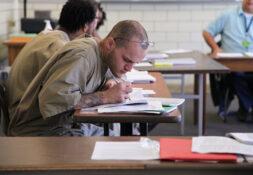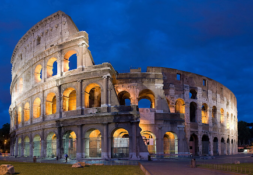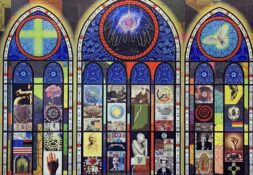Notre Dame Symphony Orchestra makes their 2023-24 debut
The Notre Dame Symphony Orchestra performed “Epic: Fall Promenade Concert,” its first of two fall-semester shows on October 9. The event was free but ticketed, and demand for the show was so high that the audience spilled over into the overflow seats behind the stage.
This performance opened Professor Daniel Stowe’s 29th year as Director of the Notre Dame Symphony Orchestra. For the concert, Stowe decided to mix two well-known classical pieces—Rossini’s William Tell Overture and Beethoven’s Symphony no. 4—with a selection from John Williams’ Star Wars compositions.
Stowe told the Rover his reasons for including each piece, “Tell would be a great opener for the ‘epicness’ theme of the show.” Additionally, he explained that he wanted to perform a composition with a few well-known movements that most people have not heard in their entirety. He said that such a balance would give the audience something familiar while also providing the novelty of learning where famous sections such as Tell’s “cavalry theme” fit within the piece as a whole.
Stowe believes that Beethoven deserves inclusion both for his enormous impact on the musical tradition and because his music is “some of the best for training orchestral cohesion.” Stowe described how he usually includes at least one Beethoven symphony in some performance each year. He noted that, since Beethoven composed nine symphonies over his career, students have the opportunity to play half of Beethoven’s symphonies over their four years in the orchestra.
How did the suite from Star Wars end up in this mix? Stowe explained his choice to include the more popularly recognizable music, saying, “I always wanted to do John Williams, and I figured we’d turn to his most distinguishing and highly acclaimed piece.” He added that Star Wars served as a “hook” for some people who hadn’t watched the orchestra before, and he “hopes to see them stick around and come back again.”
Although Star Wars may initially seem incongruent with the other pieces of the evening, Stowe noted that cinematic orchestral music is actually deeply indebted to the broader orchestral tradition, especially 19th-century Wagnerian opera. John Williams’ work is a particularly good example of this link thanks to his use of a musical device called a leitmotif, a discrete section of music that represents a character or theme and recurs throughout the work to accompany that part of the action. Movements such as the “Imperial March” or “Luke’s Theme” are modern instantiations of this traditional operatic device that complement film because “they create a musical backdrop to a visual world” and thereby enrich the viewer’s experience.
The musicians began preparing for the show during the first week of classes. The orchestra practiced every Tuesday for three hours, and most students took additional time to practice independently. Stowe believes that the orchestra members “are gifted enough to get by with one practice per week,” but “they are so driven that they want to practice more on their own.”
NDSO’s principal bassoonist fits this description. He stated that he devoted “a few extra hours” to individual practice over the weeks leading up to the concert.
He loves to perform Beethoven because the composer “knows the particular strengths of wind instruments and writes beautifully for them.” The fourth symphony even lets the bassoon carry the theme at one point in its fourth movement, during which the bassoonist “is challenged to be both fast and precise” while leading the orchestra with the melody.
Matt Potter, a sophomore who has trained as a cellist for 16 years, followed a similar practice schedule. He told the Rover that pieces from Star Wars created a unique challenge because “you have this conception of how the rhythm for something like the ‘Imperial March’ goes, but when you actually play it there are more notes involved. Plus, as a cellist, I have to distinguish the support from the main melody in my head.” Nonetheless, this was Potter’s favorite concert, because “it was great to have the opportunity to play some canon works like Beethoven’s Fourth and also have some lighthearted, pop-culture music like Star Wars, which you don’t really get to do a lot in orchestra.”
Sarah Hui, a senior in Breen-Phillips Hall, attended the concert and appreciated the mix of canonical and popular contemporary music. She said the show combined a traditional orchestral experience with “what the best of informality can offer,” especially “a conductor who cracks jokes throughout and wields a lightsaber at the culmination of the concert.”
Stowe did not keep his extra-musical creativity to himself, but also employed a host of creative lighting effects, which formed a spectacular visual backdrop to the entire Star Wars suite. The concert hall was plunged into darkness from the first notes of the Star Wars title. At the introduction of the theme, the hall was filled with blinking white lights, which evoked the vast starscape that accompanies each film’s iconic opening scroll. The lights flashed red and joined with fog during the “Imperial March,” then turned green to accompany “Yoda’s Theme,” recreating the lush but mysterious Dagobah swamps where Yoda lives. The orchestra was accompanied by a kaleidoscope of lightsaber clashes and laser bolts for the “Throne Room” and “End Title” movements for the grand finale.
This epic conclusion proved to be the highlight of the night for performers and audience members alike. Potter called it “one of the coolest experiences ever,” because “as soon as we played the last notes of the piece, the whole audience was in a standing ovation.”
Josh Chen, an audience member and avid Star Wars fan, thought the moment “felt genuinely magical” and praised the entire Star Wars suite as “a compelling, magnificent rendition of several of the most iconic cinematic musical pieces.”
In Stowe’s mind, this sort of reaction is NDSO’s raison d’etre. As he put it, “My imperative is to give the audience and orchestra the best musical experience I can give them.” The bassoonist echoed this opinion about the importance of NDSO, stating that, “NDSO, among other ensembles, can provide through music what the Snite and the Special Collection in the library give us for visual art and literature.” Members of the Notre Dame and South Bend community can come see “some of the greatest works ever composed” as part of an event at which “one is not merely being entertained, but experiencing genuine beauty.”
Stowe feels that this concert was a great beginning to the year and hopes that all audience members will return to enjoy subsequent shows. The Notre Dame Symphony Orchestra’s next performance will take place Friday, November 17 at 8 p.m. in Leighton Concert Hall in Debartolo Performing Arts Center.
Jack McEnery is a Senior PLS and theology double major living in Alumni Hall. He can usually be found reading in the PLS lounge while consuming copious quantities of caffeine and is quite comfortable collecting questions, concerns, or chocolate chip cookies from anyone. You can email him at cmcenery@nd.edu (especially if you have chocolate chip cookies).
Photo Credit: ND Department of Music website
Subscribe to the Irish Rover here.
Donate to the Irish Rover here.





